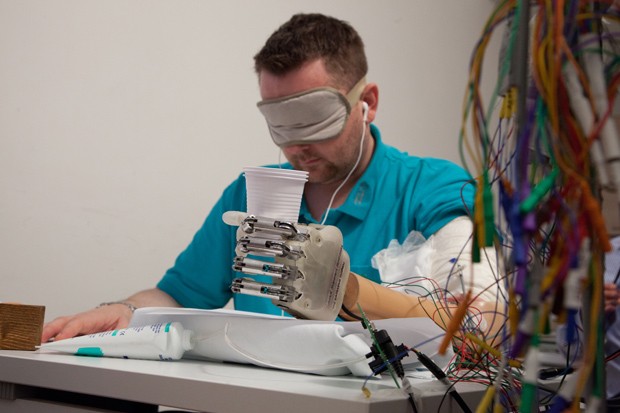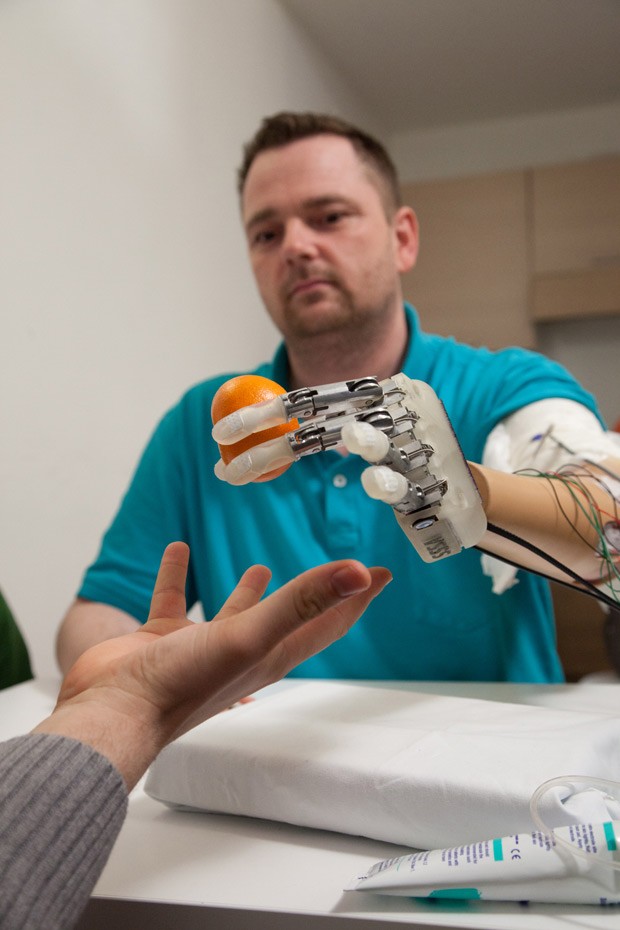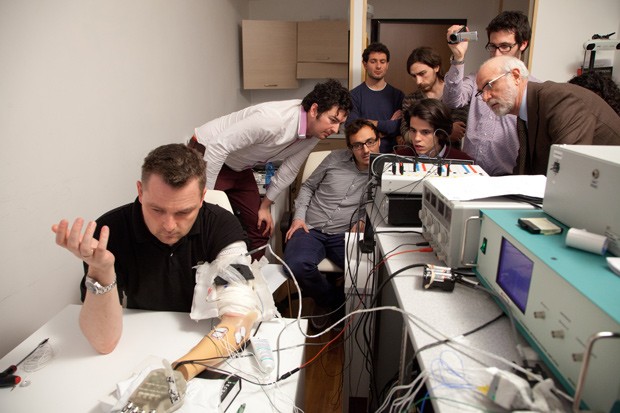Ciência e Tecnologia
AVC é principal causa de mortes no país, mas falta conscientização sobre sinais
Neurologista aponta para necessidade de estar atento aos sintomas iniciais do AVC
Sobre os fatores de risco, nos últimos anos foi publicado um estudo chamado Interstroke que reúne os principais fatores de risco da doença. A pesquisa foi feita com três mil pessoas que tiveram AVCs e a mesma quantidade de indivíduos sem histórico do problema em 22 países – entre eles o Brasil. De acordo com o estudo, o fator de risco mais importante foi a hipertensão arterial. Os outros principais fatores que contribuem para o risco de AVC seriam as anormalidades do colesterol, o sedentarismo, o tabagismo, uma dieta inadequada, o aumento do índice cintura-quadril, diabete melito, ingestão excessiva de álcool, problemas como estresse e depressão, além de condições cardíacas como a arritmia.De acordo com o neurologista Fernando Figueira, chefe do Serviço de Neurologia do Hospital São Francisco na Providência de Deus, esses estudo serviu para constatar um fato que a comunidade médica já sabia. “A pesquisa universaliza dados importantes e mostra, principalmente, os fatores mais importantes bem definidos. Desses fatores de risco, a gente vê que a maioria deles é passível de correção”, aponta.
O neurologista diz ainda que os gastos que a Organização Mundial da Saúde prevê que serão dispensados com AVCs vão muito além de valores envolvendo os custos de tratamento. Figueira explica que existe um custo para a sociedade quando um indivíduo produtivo fica incapacitado, além de gastos com reabilitação e exames complementares. “A maioria desses indivíduos não consegue retornar plenamente as atividades prévias após sofrer um AVC”, explica.
Dentre os fatores de risco, 52% seriam atribuídos à hipertensão arterial, 29% ao sedentarismo, 19% ao tabagismo e 19% à falta de uma dieta saudável. Quanto à questão da alimentação, o neurologista aponta que é um campo muito aberto, mas que recomenda que as pessoas diminuam o consumo excessivo de sal e evitem dietas ricas em gordura.
O AVC é caracterizado basicamente pela falta de irrigação sanguínea em alguma parte do cérebro. Sem esse sangue, os neurônios presentes na região afetada acabam não tendo como ter acesso à nutrientes e ao oxigênio, e como isso podem morrer. “O AVC é um fator de incapacidade. Quando você cruza com uma pessoa que teve um infarto do miocárdio na rua, vc não percebe que a pessoa passou por isso. Mas, se cruzar com uma que teve um AVC, certamente vai ver as sequelas. O AVC deixa sequelas na maioria das vezes e, de acordo com o tipo, pode incapacitar a pessoa de fazer suas atividades normalmente”, alerta.
Segundo o especialista, a maioria dos esforços para conscientização de como socorrer uma vítima de AVC parte da própria Academia Brasileira de Neurologia. No dia nacional do AVC, são realizadas atividades em várias cidades do Brasil, tentando lembrar a população da importância de estar atento aos primeiros indícios do quadro de AVC. Porém, as pessoas ainda não dispensam a atenção necessária aos sintomas iniciais, que pode começar com, por exemplo, uma dormência no braço. “Há a necessidade de orientar a população da urgência do tratamento precoce, e isso depende da sociedade como um todo”, diz Figueira.
* do projeto de estágio do JB
Neurologist points to the need to be aware of the early symptoms of stroke
Journal of BrasilRafael Gonzaga *
Although data from the Ministry of Health suggest the cerebrovascular accident (CVA) is the major single cause of death in the country, both men and women, few campaigns on the risk factors has been made in vascular Brazil. Popularly known as stroke, is a major cause of death and serious sequelae in the world, causing approximately 70 thousand deaths every year Brazilian. An estimate of the World Health Organization (WHO) for 2030 also shows that the overall costs of stroke should be more than four times higher than those for malaria and more than three times that of tuberculosis.
About the risk factors, in recent years a study called Interstroke that gathers the main risk factors of the disease was published. The survey was conducted with three thousand people who have had strokes and the same amount of individuals without a history of the problem in 22 countries - including Brazil. According to the study, the most important risk factor was hypertension. The other main factors contributing to the risk of stroke would be abnormalities of cholesterol, physical inactivity, smoking, poor diet, increased waist-hip ratio, diabetes mellitus, alcohol abuse, problems such as stress and depression, as well conditions such as cardiac arrhythmia.
According to the neurologist Fernando Figueira, Head of the Department of Neurology at St. Francis Hospital in Providence of God, these studies served to state a fact that the medical community already knew. "The research univer important data and mainly shows the most important factors well defined. These risk factors, we see that most of them are correctable, "points.
The neurologist also said spending that the World Health Organization predicts that will be dispensed with strokes go far beyond values involving treatment costs. Figueira explains that there is a cost to society as a productive individual is incapacitated, in addition to spending on rehabilitation and complementary tests. "Most of these individuals can not fully return the previous activities after suffering a stroke," he explains.
Among the risk factors, 52% would be attributed to hypertension, 29% sedentary lifestyle, smoking, and 19% to 19% lack of a healthy diet. On the question of power, the neurologist points which is a very open, but recommends that people reduce excessive consumption of salt and avoid high-fat diets.
Stroke is characterized primarily by a lack of blood supply to some part of the brain. Without this blood, neurons in the affected region end up not having access to nutrients and oxygen, and how it can die. "Stroke is a factor of disability. When you cross with a person who had a myocardial infarction in the street, u do not realize that the person went through it. But if you come across one that had a stroke, will certainly see the sequels. Stroke leaves sequelae in most cases and in accordance with the type, can incapacitate a person from doing your normal activities, "he warns.
According to the expert, most efforts to raise awareness of how to help a stroke victim of the Brazilian Academy of Neurology own. On the national day of stroke, activities are carried out in several cities in Brazil, trying to remind people of the importance of paying attention to the first signs of a stroke,. However, people still do not dispense the necessary attention to the early symptoms, which can start with, for example, numbness in the arm. "There is a need for educating the public to the urgency of early treatment, and it depends on the society as a whole," says Stone.
* The design stage of JB
Google Tradutor para empresas:Google Toolkit de tradução para appsTradutor de sitesGlobal Market Finder



 Voluntário
Dennis Aabo Sørensen identifica as características do objeto que segura
por meio de uma sensibilidade artificial (Foto: LifeHand 2/Patrizia
Tocci)
Voluntário
Dennis Aabo Sørensen identifica as características do objeto que segura
por meio de uma sensibilidade artificial (Foto: LifeHand 2/Patrizia
Tocci) Voluntário faz bateria de testes para testar tato
Voluntário faz bateria de testes para testar tato Sørensen é observado por equipe durante os testes da nova prótese (Foto: LifeHand 2/Patrizia Tocci)
Sørensen é observado por equipe durante os testes da nova prótese (Foto: LifeHand 2/Patrizia Tocci)